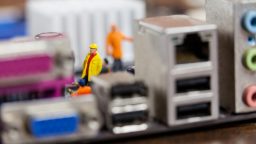Transportation technology is evolving rapidly, reshaping the way we move from one place to another. From electric vehicles to self-driving cars, and from hyperloop systems to drones, innovations in transportation are not only improving efficiency and safety but also making a significant impact on sustainability and the environment. As we look ahead, the future of transportation holds even more groundbreaking possibilities. Let’s explore some of the most exciting innovations in transportation technology that are transforming the way we travel and how these developments will impact our daily lives.
- Electric Vehicles (EVs): Leading the Charge
Electric vehicles (EVs) have made tremendous strides in recent years and are poised to become a dominant force in the transportation industry. EVs offer numerous advantages over traditional internal combustion engine (ICE) vehicles, including lower emissions, reduced fuel costs, and quieter operation. With growing concerns over climate change and the need for sustainable energy solutions, EVs are seen as one of the most important innovations in transportation technology.
The rise of EVs is supported by significant improvements in battery technology, which have led to longer driving ranges and faster charging times. Major automakers, such as Tesla, Nissan, and General Motors, are expanding their electric vehicle offerings, while new players, like Rivian and Lucid Motors, are also entering the market. Governments worldwide are offering incentives to encourage the adoption of EVs, including tax breaks and subsidies, and many countries are setting ambitious goals to phase out gasoline-powered vehicles in the coming decades.
In addition to passenger vehicles, electric buses, trucks, and even planes are emerging, further reducing the carbon footprint of transportation. Charging infrastructure is also improving, with more public charging stations being built, making it easier for people to adopt EVs and travel long distances without worrying about range anxiety.
- Autonomous Vehicles: The Future of Driving
Self-driving cars, or autonomous vehicles (AVs), represent one of the most ambitious innovations in transportation technology. AVs are equipped with sensors, cameras, radar, and artificial intelligence (AI) systems that enable them to navigate and make decisions without human intervention. The promise of AVs is not only to improve safety by eliminating human error but also to increase efficiency, reduce traffic congestion, and provide mobility solutions for people with disabilities or those who are unable to drive.
Leading tech companies, such as Waymo (a subsidiary of Alphabet) and Tesla, are at the forefront of developing autonomous vehicles, with various levels of autonomy already being tested on public roads. While fully autonomous vehicles are still in the testing phase, significant progress has been made in developing semi-autonomous systems, such as Tesla’s Autopilot and GM’s Super Cruise, which assist with tasks like lane-keeping, adaptive cruise control, and automatic emergency braking.
The widespread adoption of autonomous vehicles could lead to the development of new transportation models, such as autonomous ride-hailing services, where passengers can hail a self-driving car instead of owning a personal vehicle. This shift could reduce the number of cars on the road, decrease traffic, and transform urban mobility.
- Hyperloop: Revolutionising High-Speed Travel
The concept of the hyperloop—a high-speed transportation system that uses magnetic levitation and vacuum tubes to propel pods at incredible speeds—has gained significant attention in recent years. Originally proposed by Elon Musk, the hyperloop aims to provide a faster, more efficient, and environmentally friendly alternative to traditional rail and air travel.
In theory, hyperloop pods could travel at speeds of up to 760 miles per hour, drastically reducing travel times between cities. For example, the journey from Los Angeles to San Francisco, which takes over six hours by car or around an hour by plane, could be completed in just 30 minutes. Several companies, including Virgin Hyperloop and Elon Musk’s The Boring Company, are working on prototypes and conducting feasibility studies to make the hyperloop a reality.
While the technology is still in development, the hyperloop could revolutionise long-distance travel, offering an alternative to road, rail, and air transportation. If successful, it could help alleviate congestion in major cities, reduce carbon emissions, and redefine how we think about intercity travel.
- Drones: Delivering the Future
Drones, or unmanned aerial vehicles (UAVs), are no longer just tools for recreational use or military operations. They are quickly becoming an essential part of modern transportation, especially in the fields of delivery and logistics. Companies like Amazon, UPS, and Google are investing heavily in drone delivery systems, aiming to deliver packages faster and more efficiently than traditional ground-based methods.
Drones are already being used in limited areas for delivery services, such as food delivery or small packages, and they have the potential to transform last-mile logistics. By bypassing traffic and using air routes, drones can deliver packages in a fraction of the time it would take using trucks or vans. In addition to deliveries, drones are being used for aerial surveys, monitoring traffic, and providing real-time data for agriculture, construction, and emergency services.
The widespread adoption of drones could reduce delivery costs, lower carbon emissions, and provide quicker access to goods, especially in hard-to-reach areas. However, regulatory challenges and safety concerns still need to be addressed before drones can be fully integrated into our daily transportation systems.
- Smart Traffic Management: Using Technology to Tackle Congestion
As urban areas continue to grow, traffic congestion has become a significant issue. Smart traffic management systems use a combination of sensors, cameras, AI, and real-time data to optimise traffic flow and reduce congestion. These systems can monitor traffic patterns, adjust traffic lights in real-time, and provide drivers with information about the fastest routes.
For example, cities like Singapore and Barcelona have implemented smart traffic solutions that use data from sensors and cameras to adjust traffic signals based on real-time traffic conditions. These systems not only help reduce congestion but also improve air quality by reducing the amount of time vehicles spend idling in traffic.
In the future, smart traffic management systems could be integrated with autonomous vehicles, allowing for seamless coordination between cars and traffic infrastructure. This could lead to more efficient traffic flow, reduced emissions, and safer roads.
- Flying Cars: Making Science Fiction a Reality
While flying cars may have once seemed like the stuff of science fiction, recent advancements in vertical takeoff and landing (VTOL) technology are bringing us closer to this futuristic mode of transportation. Several companies, including Uber, Terrafugia, and Vertical Aerospace, are working on electric vertical takeoff and landing (eVTOL) aircraft that could transform urban air mobility.
These vehicles are designed to take off and land vertically, allowing them to operate in urban environments without requiring large runways. They could be used for air taxis, allowing people to bypass traffic and reach their destinations more quickly. The technology is still in the early stages, with prototypes undergoing testing, but flying cars could soon become a viable alternative to traditional taxis and ride-sharing services in busy cities.
Conclusion
Transportation technology is advancing at an unprecedented rate, with innovations that promise to transform how we live, work, and travel. From electric vehicles and autonomous cars to hyperloop systems and drones, the future of transportation is not only about improving efficiency but also about making our systems more sustainable and accessible. While many of these technologies are still in development, they hold the potential to revolutionise the way we move, offering faster, greener, and more convenient transportation solutions for the future.





